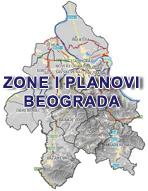Landscape Urbanism’s History
Extending Landscape Urbanism’s History
In practice, landscape and urbanism have been held apart by professional boundaries, which are reinforced by divergent tactics and working scales. Joining these two terms into a hybrid methodology, as landscape urbanist practitioners have recently done, has sparked new ways of approaching the condition of cities as vast horizontal networks. Landscape urbanism promotes a “disciplinary realignment where landscape supplants architecture’s role as the basic building block of urban design.” (note 1) This collision of terminology and methodology has contributed greatly to current design discourse. At the same time, the prevailing effort to present landscape urbanism as a new, emergent discipline obscures a substantial lineage of thought that bolsters its credibility, if not its claim for originality. Prioritizing landscape as the foundation for a sound urbanism, and doing so through synthetic, interdisciplinary practice, has strong roots in the work of the earlier urban theorists Patrick Geddes, Lewis Mumford, and Benton MacKaye. While landscape urbanists mention these important thinkers who broke the molds of top-down planning methods, they offer little discussion of the continuities between landscape urbanism and this history of urban critique based in the landscape.
Australian landscape architect Peter Connolly refers to the “default” understanding of landscape urbanism, as defined in North America by Charles Waldheim and James Corner in The Landscape Urbanism Reader (note 2) and Praxis 4: Landscapes (note 3). In these texts, Waldheim and Corner seem invested in a perception of their work as a break from past practices, as a unique praxis poised to address new urban situations. This emphasis on newness allows their work to be appreciated as emergent, in connection with the same ecological spontaneity landscape urbanists hope to nurture in practice. Stressing the newness of their approach, however, isolates it as an intellectually autonomous body of thought, rather than a flexible, historically integrated working method. I will be responding to this “tacitly agreed upon idea of what landscape urbanism is,” (note 4) questioning the need for the field to be developed as an “ism” linked to a particular self-proclaimed genealogy and practice, rather than as an open set of principles that can guide the current practice of landscape architecture, urbanism and architecture.
Center 14: On Landscape Urbanism (note 5) presents a collection of historical essays that inform landscape urbanism. Yet this history only goes as far back as Ian McHarg’s Design with Nature in 1969. Setting the stage for McHarg, however, Patrick Geddes, Lewis Mumford, and Benton MacKaye foresaw the need to approach the city with new vision and strategies. Central to their approaches to what Mumford termed “living urban tissue” (1969), and Geddes called “conurbation” (1923), is an understanding that landscape underlies urban order.
As a city disperses, it loses its complexity and charge. Geddes, Mumford and Mackaye offer ideas for how to recapture this vitality in the new, expansive urban form. These historic writings suggest how landscape urbanism might be strengthened by greater attention to cultural and ecological landscape identity. Rather than focus on an essentially architectural understanding of urbanism-as-program and landscape-as-surface, these theorists recognize how landscape can generate infrastructure and how urbanism is formed by cultural interaction in the landscape over time.
Geddes, Mumford and MacKaye support a synthetic, interdisciplinary approach to a hybridized city. A hybrid approach can deal with current urban conditions where distinctions between urban and rural have blurred. James Corner writes that landscape urbanism “is a proposition of disciplinary conflation and unity, albeit a unity that contains, or holds together, difference—difference in terms of the ideological, programmatic, and cultural content of each of those loaded and contested words, ‘landscape,’ ‘urbanism’.” (note 6) In their descriptions of the urban condition and the approach it calls for, Geddes, Mumford, and MacKaye all support conflations of disciplines and categories traditionally held distinct. Their writing and suggested methods disrupt binary understandings of city/country, urban/rural, and human/nature. Much like landscape urbanists, these three promote new images of an interconnected city-landscape rather than viewing cities as a corruption of nature. They stand apart from tendencies that posit environmentalism as the conservation of designated wilderness areas, instead seeking to integrate natural forces and human settlement. They each, at least rhetorically, also eschew top-down planning methods that seek to apply abstract, rational means of ordering urban dynamics. Instead, they look to systems of order that pre-exist in the landscape and underly a heterogeneous cultural cohesion within particular regions. They pursue an urbanization that maintains the identity of place by effectively integrating these categories and preventing homogeneous and clumsy settlements.



Коментари
Постави коментар
Ovde možete ostaviti vaš komentar i sugestije